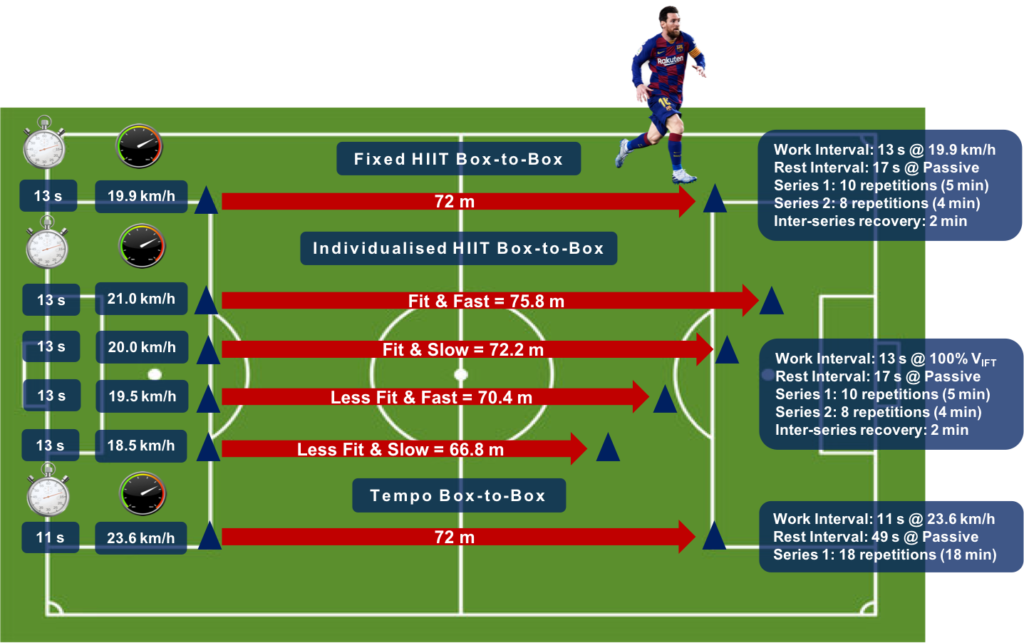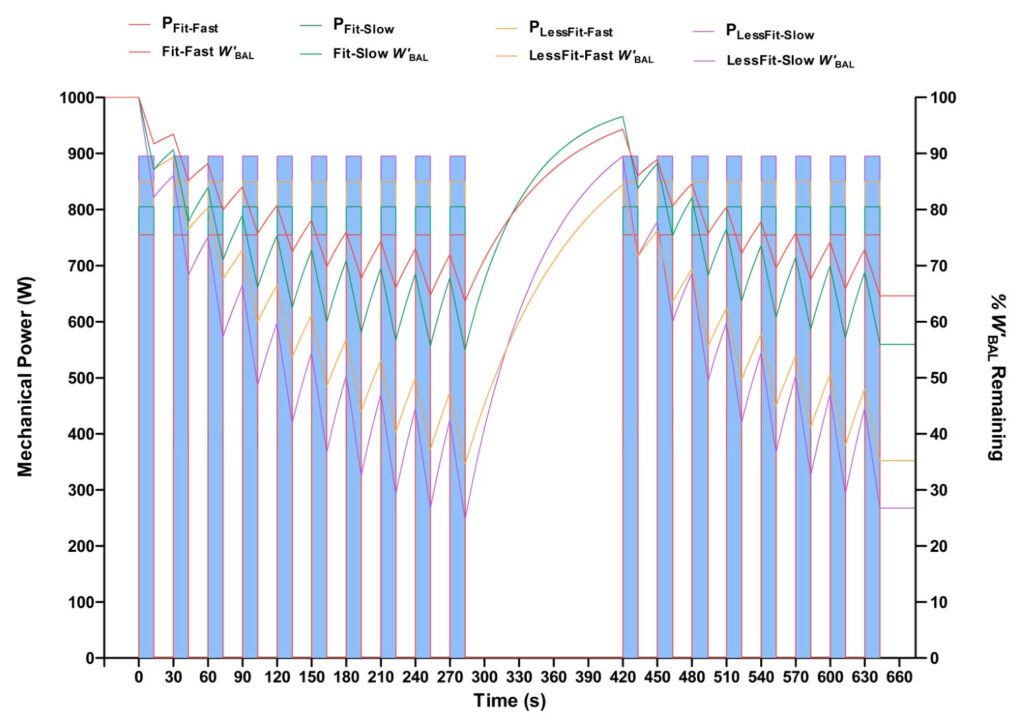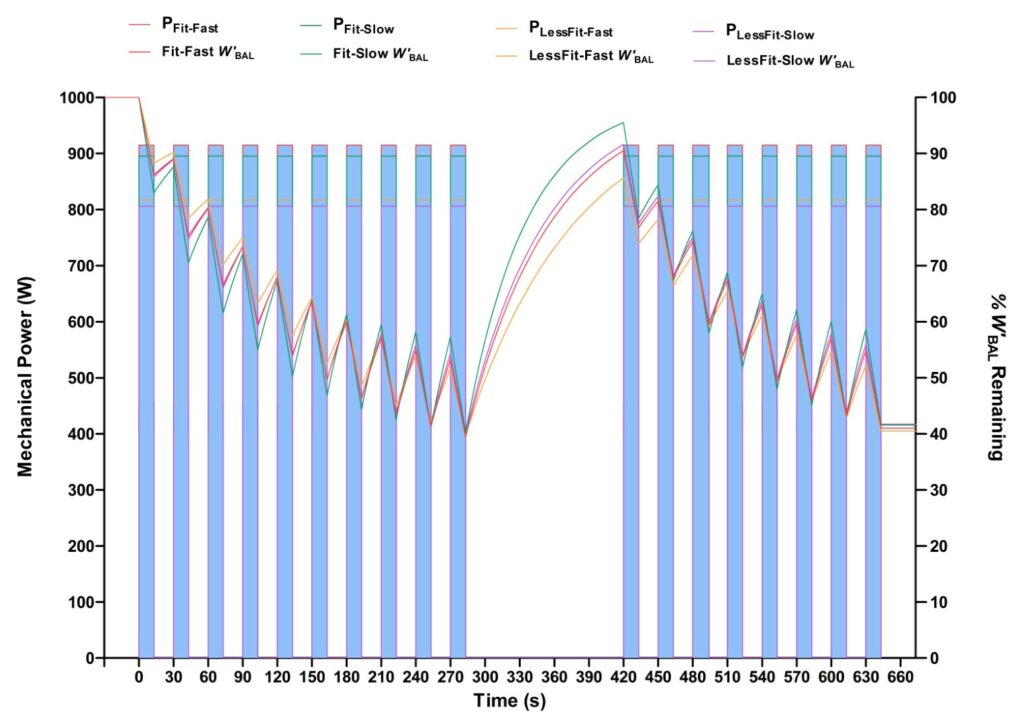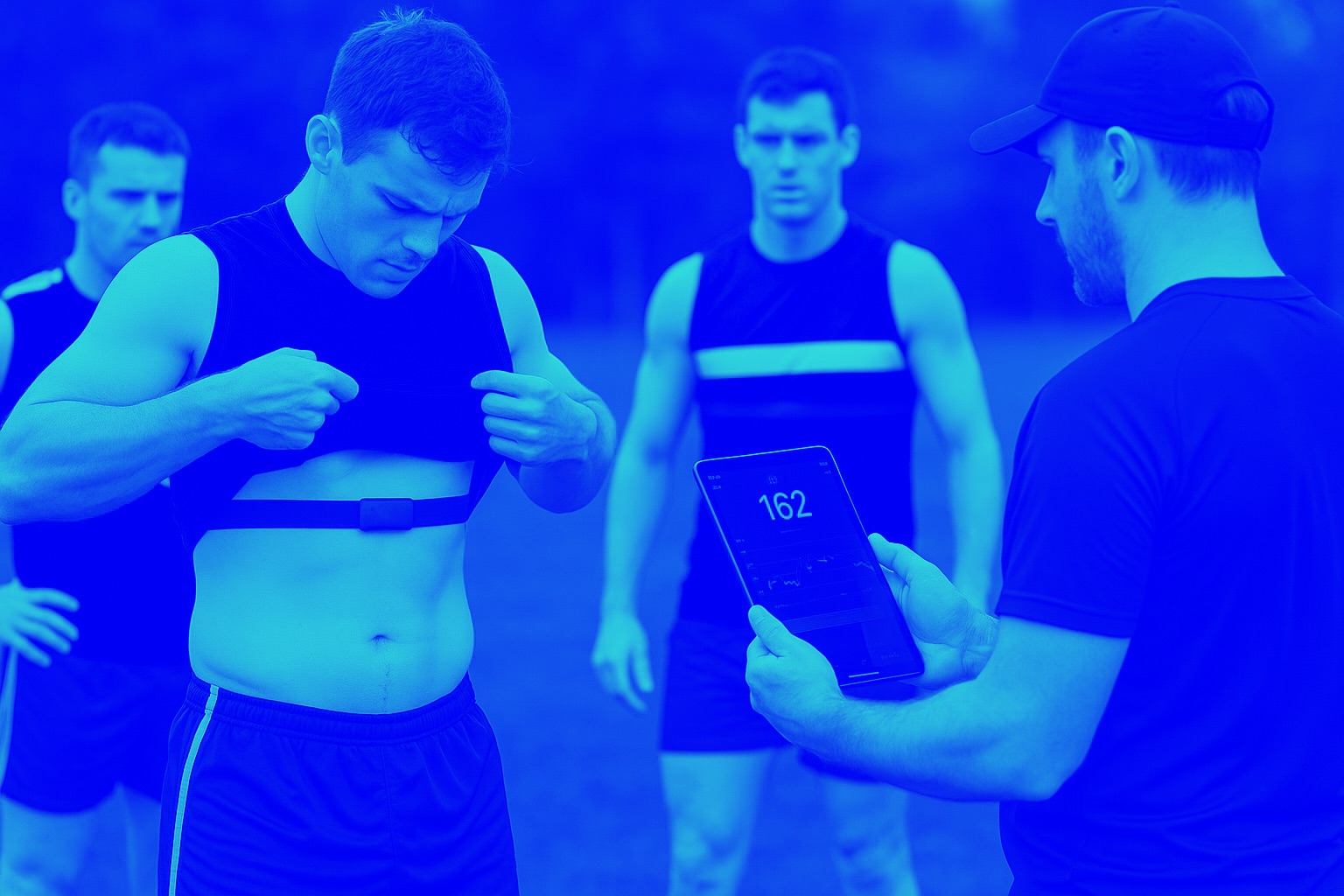One box-to-box does not fit all – insights from running energetics
Buchheit, M, Vassallo, C and Waldron, M. One box-to-box does not fit all – insights from running energetics. Sport Perf and Sci Reports, #136, V1, April 2021.
Full text here
There is a growing interest in programming generic (i.e., no ball involved) high-speed running (HSR) drills in most team sports, especially for those played over large spaces (e.g., soccer, rugby, field hockey, Australian Rules Football). Specific HSR sessions are, today, part of most microcycles and post-match HSR top-ups for substitutes or benched players are commonly adopted (Buchheit, 2019a).

Figure 1. Detailed running prescriptions for the four-player locomotor profiles when programming fixed HIIT box-to-box runs, individualised HIIT box-to-box runs or tempo box-to-box runs.
HSR drills can be programmed with either a metabolic conditioning purpose (high-intensity interval training, HIIT, where fixed duration (13-15 s) runs are separated with short recovery periods < 30 s) or not (“tempo runs”, 10-12 s with recovery periods > 45 s). For ease of implementation, these drills are regularly performed from one box to the other on the soccer pitch (box-to-box runs, from one penalty area to the other), with all players running together.
While these two types of box-to-box drills are likely efficient to get players to accumulate a substantial amount of HSR distance (> 600-1500 m) (Buchheit, 2019a), the fact that all players run together prevents a tight individualisation of their (external) mechanical work and in turn, their internal, energetic load.
The consequence of this is that some players may not benefit from the fixed HIIT box-to-box drills as a conditioning stimulus, while others may be overloaded, with large levels of metabolic perturbation and associated increased (neuromuscular) fatigue.

Figure 2. Fixed HIIT box-to-box consisting of 72 m runs in 13 s, interspersed by 17 s for series 1 (10 repetitions) and series 2 (8 repetitions), with 2 min recovery between series. External mechanical power output (P) and balance of remaining W´ (W´BAL), expressed in relative %, is displayed for all four athlete profiles. Note how despite the fixed running speed (19.9 km/h), there exist differences in over-ground mechanical power output accounting for the influence of body mass and stature (i.e. varied player profile) on work done during each work interval. When P is > CP, W´ is expended; when P is < CP, W´ is reconstituted, such that the balance of W´ remaining (W´BAL) was quantified across the HIIT session. Note also the influence of higher critical power (i.e. aerobic ‘fitness’) on the between-series recovery kinetics of W´. Fixed HIIT produced large disparity in inter-individual responses.

Figure 3. Individualised HIIT box-to-box at 100% VIFT. Runs in 13 s, interspersed by 17 s for series 1 (10 repetitions) and series 2 (8 repetitions), with 2 min recovery between series. For each athlete profile, speed (100% VIFT) was modelled into external mechanical power output (P) using the over-ground running energetics model. Balance of remaining W´ (W´BAL), expressed in relative %, is displayed for all four athlete profiles. When P is > CP, W´ is expended; when P is < CP, W´ is reconstituted, such that the balance of W´ remaining (W´BAL) was quantified across the HIIT session. Individualised HIIT achieved a homogeneous internal response for all four athlete profiles.
The present study shows was that when players with different locomotor profiles performed similar, fixed HIIT box-to-box runs, they presented with very large differences in internal energetic responses. While some of them finished their series with their W´ almost unaffected, for others, it approached near-severe depletion (Figure 2 and Table 2).
When individualising the distance of the runs based on players’ individual locomotor profiles (Figure 3 and Table 2); however, the magnitude of W´ depletion and the likely associated metabolic demands and neuromuscular fatigue were very similar. This lends support to the principle of exercise intensity individualisation to induce homogeneous physiological responses and, in turn, more precise and efficient training stimulus (Buchheit, 2008; Laursen & Buchheit, 2019).



